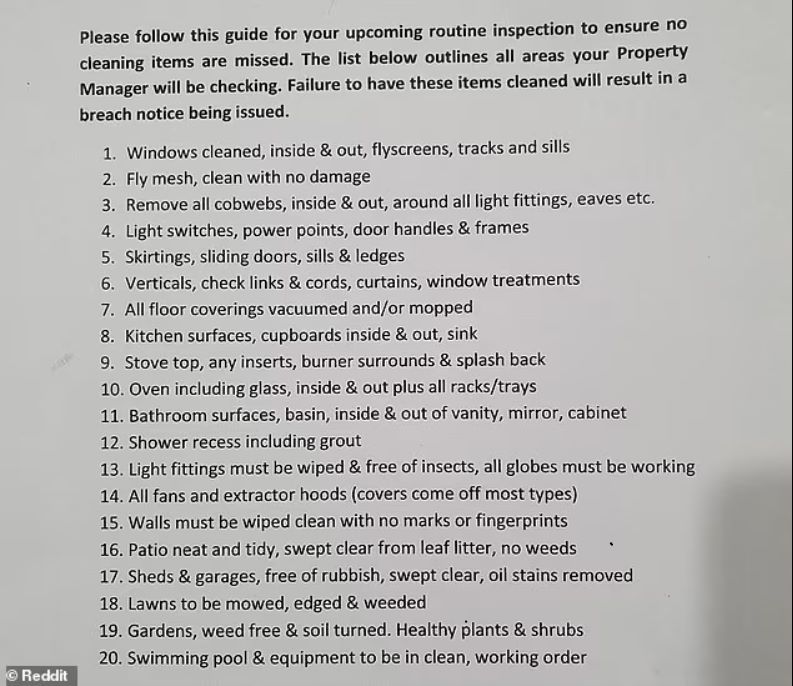Drama down under
The demands of an Australian landlord recently went viral, reaching these shores via platforms such as Reddit and online news outlets. The story concerned a landlord checklist issued to tenants ahead of routine mid-tenancy inspections, with 20 points ranging from “light fittings must be wiped and free of insects” to “swimming pool and equipment to be in clean, working order”; respondents to the online debate chimed in with stories of similar checklists including points such as wiping down sauce bottles.
The story caused something of a furore, with words like “outrageous” being used. But whilst some of the examples of landlord checklists that tenants put forward could raise eyebrows, is the degree of intricacy that some of the lists went into necessarily a bad thing?

Mid-tenancy vs end of tenancy
For a mid-tenancy inspection, landlords in Scotland would not typically be as demanding as some of their Australian counterparts referred to in the online articles. Checklists for inspections during the tenancy are not obligatory, although such visits are a good opportunity for the landlord to pick up on any developing issues and provide feedback to the tenants.
When it comes to the end of the tenancy however, tenancy deposit protection schemes such as SafeDeposits Scotland will always emphasise the importance of having issued tenancy agreements and inventories at the start of the tenancy, and the level of detail within these.
The tenancy agreement outlines any tasks the landlord expects to be completed, while the inventory sets out the condition in which they expect to find the property and its contents returned in when the tenant moves out.
In the context of a dispute
Being specific with such instructions leaves little room for interpretation. Although the highlighted Australian landlord checklist attracted some scorn for points such as “gardens, weed free and soil turned; healthy plants and shrubs”, their tenant would be in no doubt regarding the landlord’s expectations.
Putting this into the context of an end of tenancy deposit dispute; imagine a landlord claims for a deduction from the deposit for gardening, as the tenant has moved out with the garden full of weeds. They submit the tenancy agreement and inventory, including a line exactly the same as the above, as evidence, along with date stamped pictures of the garden at the end of the tenancy and a receipt from a professional gardener. The adjudicator would be able to identify a clear breach of the tenancy agreement here and consider that in their decision. A more vague instruction however, such as “look after garden” might be more challenging to reconcile with the end of tenancy outcome.
Detail is good for everyone
The more detail provided in an inventory, the smoother the tenancy journey can be for everyone. Step by step instructions are more helpful than broad statements, and are more likely to yield the outcome – a property returned as it was found in this instance – that the landlord desires. The result is a property in good condition, a happy tenant receiving their deposit back and a happy landlord ready to welcome a new tenant.




